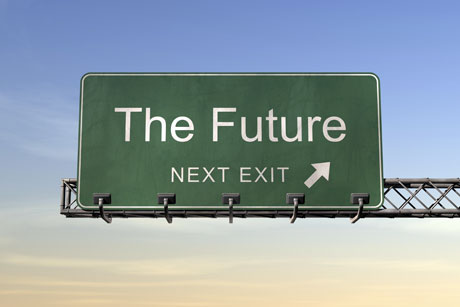
July is an oddly quiet month in the collector car world. While there are auctions going on, vintage car shamans are still picking apart the results of the RM Maranello ($28.4m), Bonhams Monaco ($6.2m), and Mecum Indy ($33.6m) sales.
And through those results, they are attempting to cast their stones and predict what will happen in Monterey. Questions are many. Is no reserve the way to go, as the collective buying power of the crowd will be great? How many 4-cams is too many 4-cams, spread over all the auctions? Are second-tier collectibles like Maserati 3500 GTs going to hold strong, or will they begin to sink back into the murky obscurity they inhabited for nearly two decades?
While no one can predict these things with certainty, there are some things that set this dip in the market apart from the crash that came in 1991.
First and most important, collector cars are not alone in their price adjustments. In 1991, the collector car market zoomed Damien Hirst-like to stratospheric levels; when it crashed, other segments of the global financial and real estate markets stayed strong.
This time, collector cars are lumped into the global recession-we're all in this together. Hemi 'Cudas are down, and so is the value of your home, your stock portfolio, your vacation home, your boat, your plane, and probably even your Golden Retriever, if you tried to sell him on Craigslist.
The Italian Emperor has no clothes
In 1991, the excesses of speculators were harshly punished when someone finally had the courage to say that 1985 Testarossas were not worth $250k. Or Daytona coupes $1m. Or even Fiat Dino coupes $85k. When standard indices of collectibility (rarity, beauty, performance, historical significance) were applied to these cars and others like them, they fell short in one or many ways. Eventually their prices plummeted, and collectors once burned, twice shy, stayed away from vintage cars as an investment for decades.
We all agree that about five years ago, the market began its most recent rise. But perhaps through dumb luck, the global recession hit the car market before it had a chance to enter the ritual fire dance that torched the 1991 market, with prices skyrocketing out of control and then plunging.
Instead, we saw a steady climb in values with, for instance, Daytonas going from $85k to $150k to $225k to $300k-and then they stopped. The market crashed globally. Banks, insurance companies, and car companies went bankrupt worldwide. Credit became impossible to get. Housing values fell off a cliff. And collector car prices were swept along in the ebbing tide.
Sifting and sorting
Throughout the past year, here at SCM world headquarters we've gone over the results of each auction and have come away with several conclusions. First of all, cars are still selling. While overall sales amounts may be down-by as much as 40% in some cases-the actual sell-through rate of the cars hasn't changed dramatically. This means there are still willing buyers, and when they encounter a seller who has adjusted his expectations to meet the current market, a deal is done.
Contrast this to the housing market, where a six-month supply of unsold homes is not uncommon. Or the new-car market, which appears to have dropped in half, in terms of sold units.
We'll quickly skip over the obvious; great cars are continuing to bring record-breaking prices, as the rich are still rich and one-of-a-kind cars with huge provenance are still just that. But for every 250 TR that sets a record, there are a host of Healey 3000s, Porsche Speedsters, and Alfa Sprint Veloces that can't match the prices they made two years ago. But unlike many other markets such as commercial real estate or even contemporary art, there is still a strong market for these lesser cars-they are just being purchased more thoughtfully by collectors who have a clear sense of what they want, what condition they are looking for, the intended purpose of the new acquisition, and what they want to pay.
All of the above is simply a way of saying that we believe Monterey will see a good sell-through this year, somewhere in the 70% rate overall, that stellar cars will ring the bell and set new records, but that overall totals will probably be about where they were last year ($139m). In any other market, that would be considered a great success. Therefore, we believe the collector car market has gone through its adjustment, that the current prices are the new prices, and we foresee economic stability for our industry for the remainder of 2009.
The fun stuff
As we've said before, one of the advantages to collector car ownership vs. possessing a stock portfolio is that you can actually take your four-wheeled investment out for a spin. In fact, the great majority of us in this hobby, and especially the readers of this magazine, are in this for the fun first and the money second.
For those of us who live in four-season climes, this is the time to forget price guides and market reports, and get out on the road.
My wife Wendie and I just returned from the four-day, 1,000-mile annual Porsche "Northwest Passage" rally, and not surprisingly, our nine-year-old Boxster S performed flawlessly. As an investment case in point, its market value has fallen off a cliff since we bought it last year, perhaps to the tune of 40%. But as we already own the car, the loss isn't manifesting itself in our lifestyle, and the value of the car doesn't bear any relation to the enjoyment we derive from it. Would we like it better if its market price were going up? Perhaps. But we don't like it any less because it isn't.